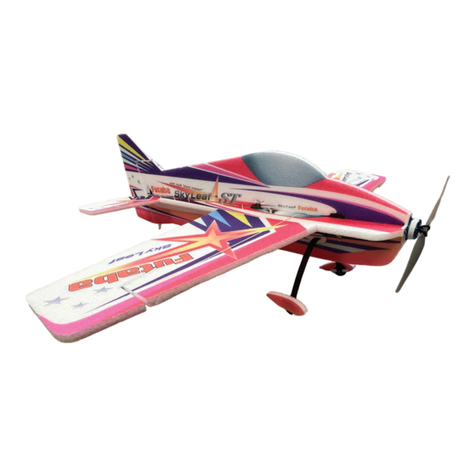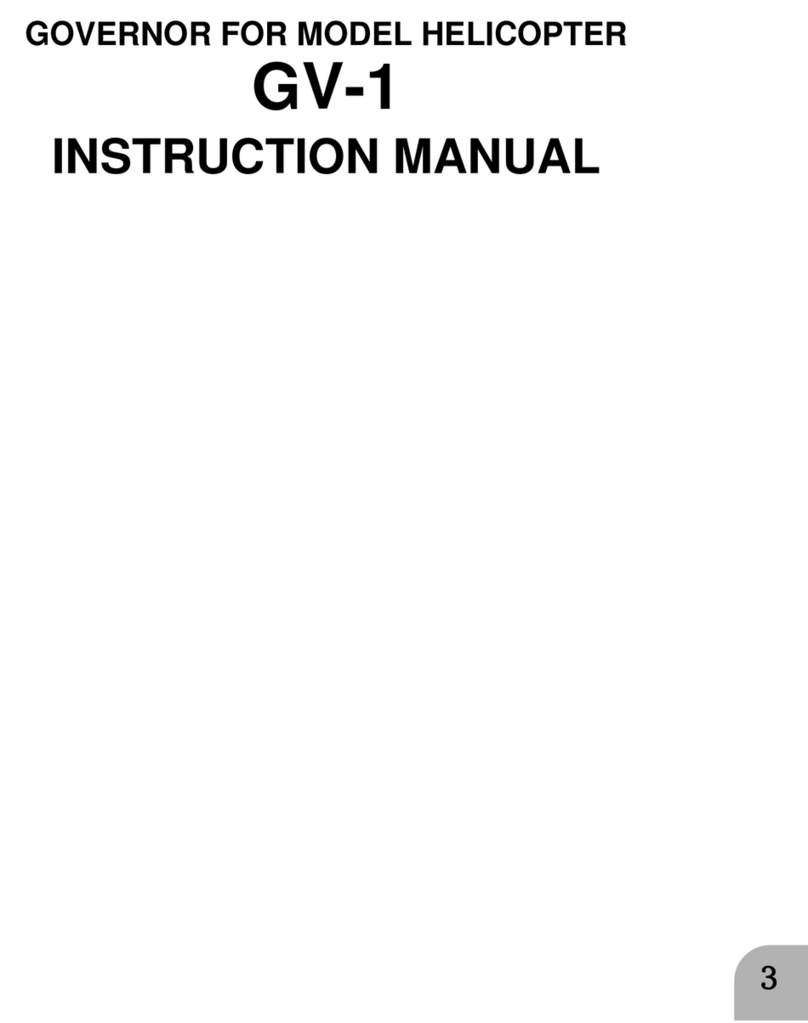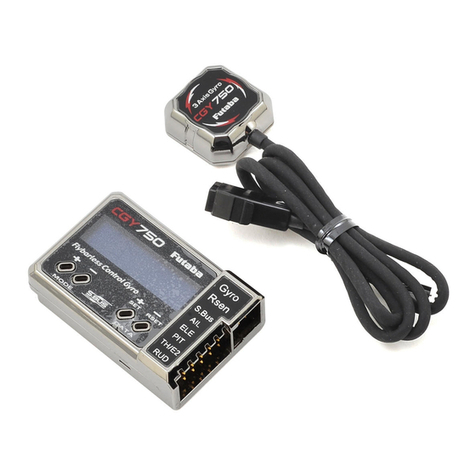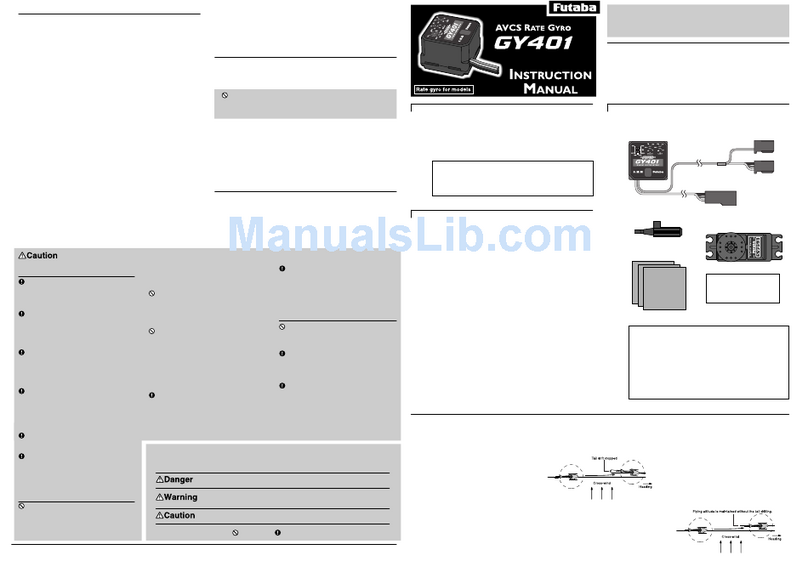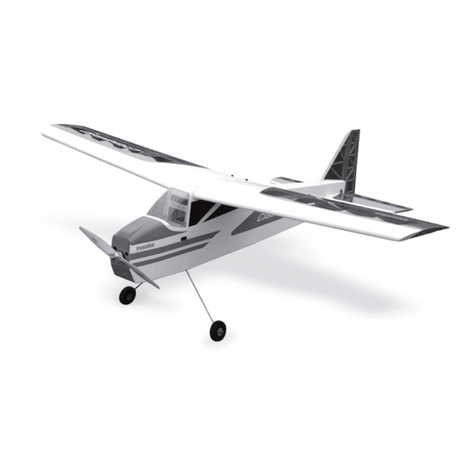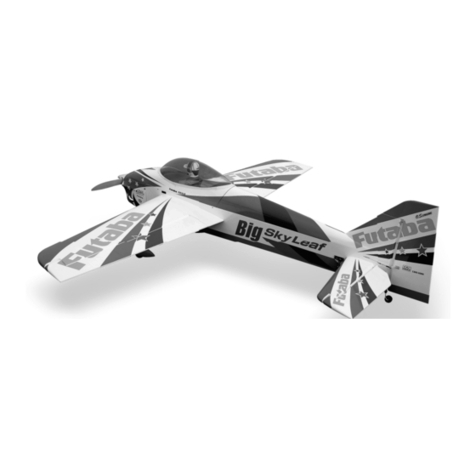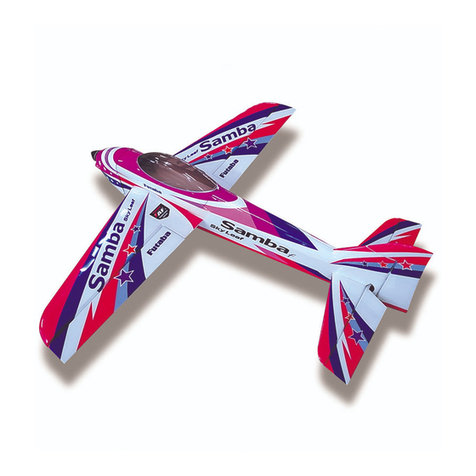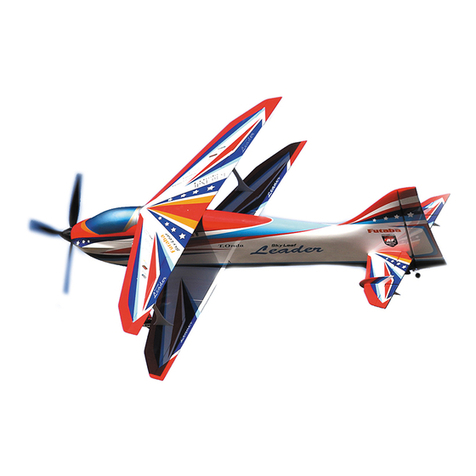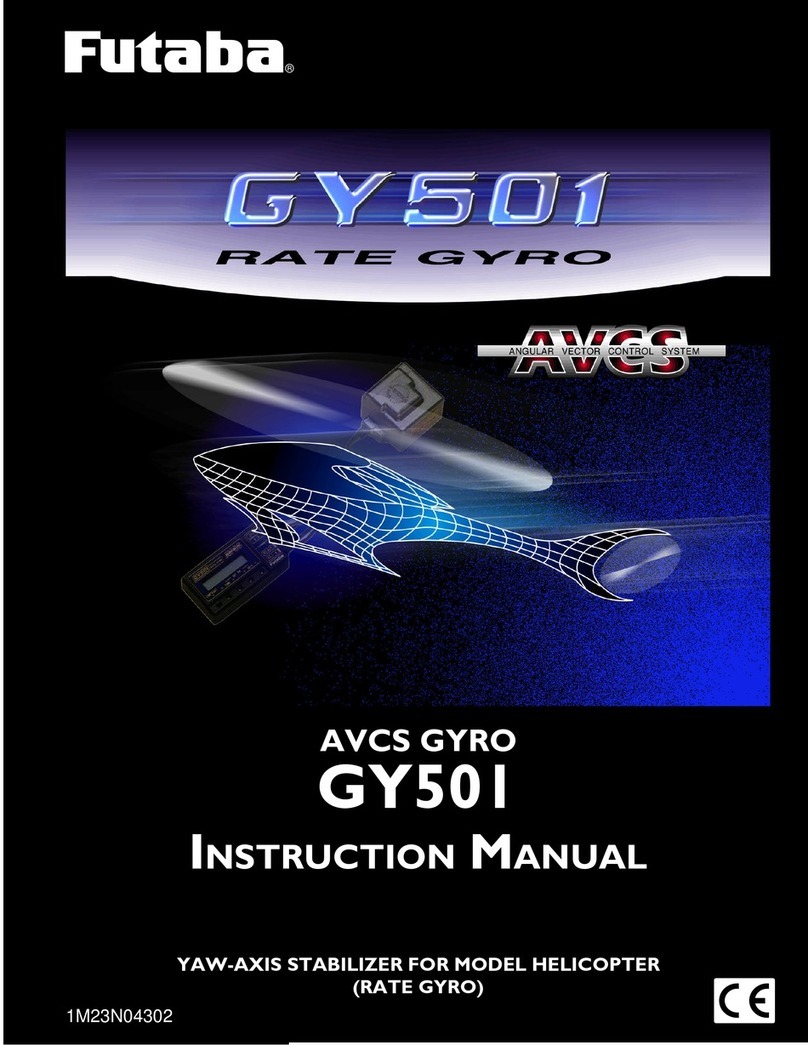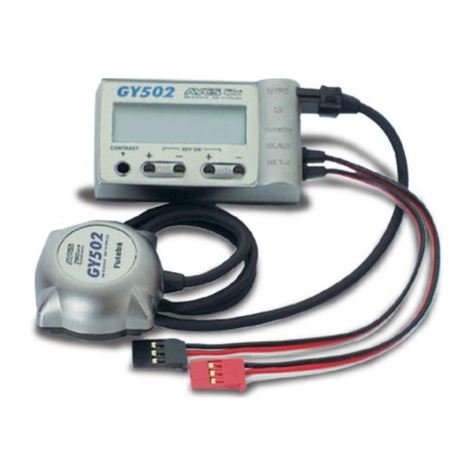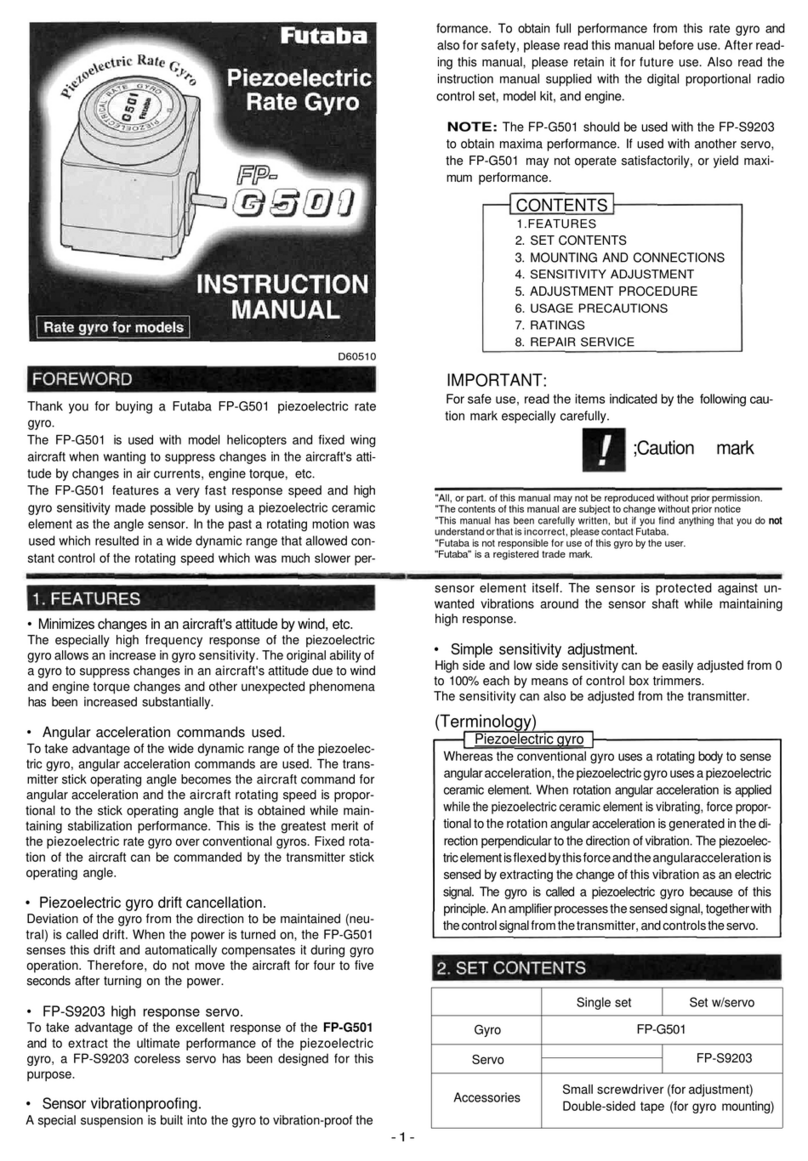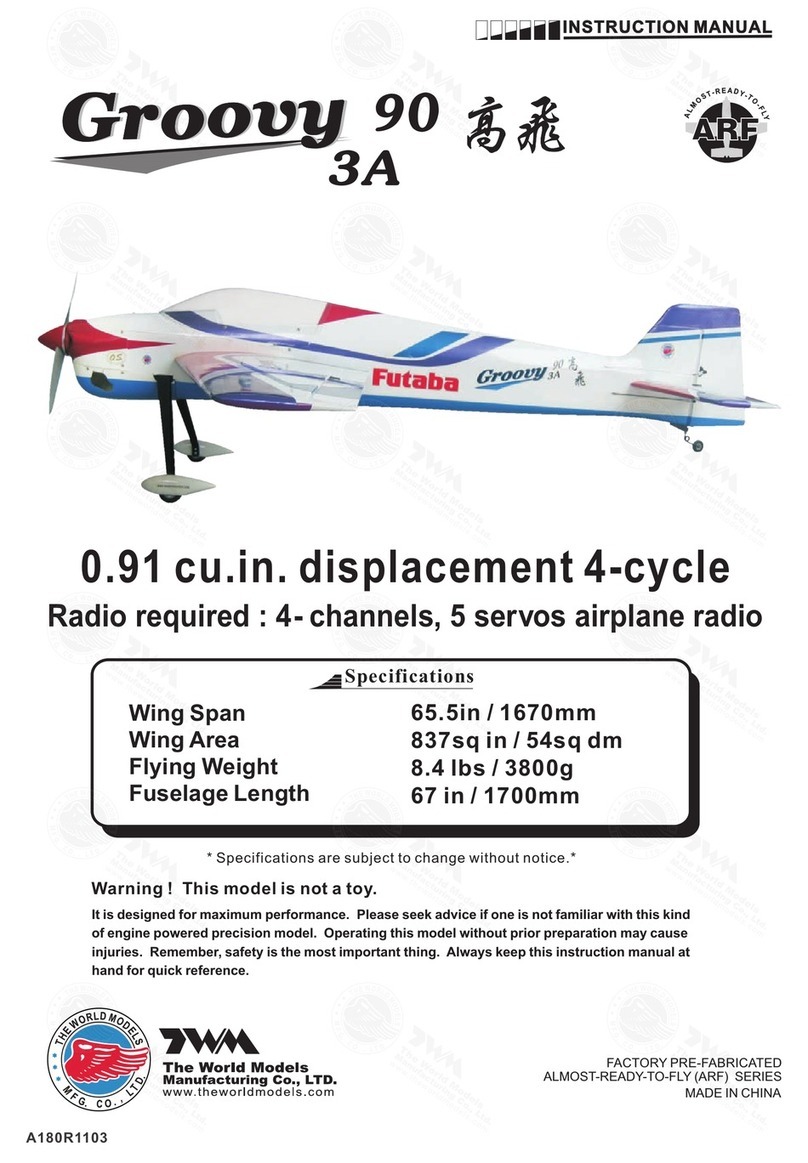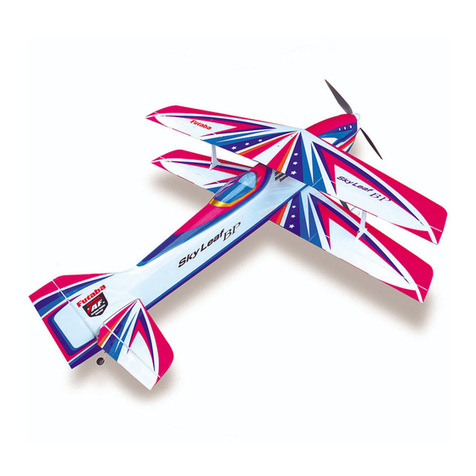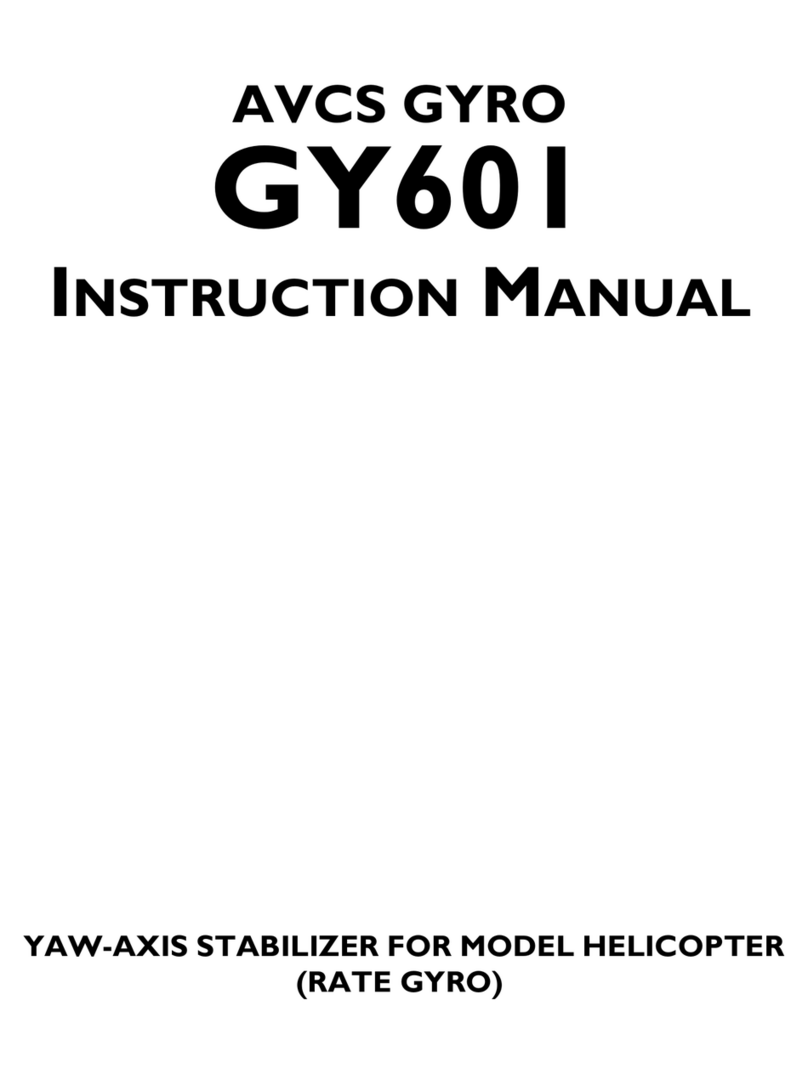
AdjustmentsAdjustments Flight AdjustmentsFlight Adjustments
AVCS / NORMAL ModeAVCS / NORMAL Mode
●A trimmer's operation*Since the trimmer is small and delicate, operate it by
gently using the provided mini screwdriver.
Setup before a ight [ Remote gain use ]
Adjusting gain with the transmitter.
When S.BUS connection or the gyro gain CH of the port 2 of a
gyro and a receiver is connected.
1. Settheservoselectionswitchtothesettingforyourtailrotorservo.Seechartbelow.2. Setupyourtransmitterbyfollowingthedirectionsinthegyrosettingmenumanual.Gyrogainissetupto50%byAVCS.Pleaserefertothegraph,AVCS,NORMALorwhenunclear.ItjudgesbytheLEDontheGY470.AVCS:RedNORMAL:Green3. ReceiverON→TheGY470requires3-5secondstoinitializewhenthepoweristurnedon.Donotmovethehelicopteranddonotmovetherudderstickduringthisinitializationorthegyromaynotinitializeproperly.Oncetheinitializationprocesshasbeencompletedtherudderservowillmove(alittle)severaltimesindicatingthattheGY470isnowreadyforight.Iftheneutralhasshifted,LEDwillblinkorange.Inthatcase,itreboots.4.Movetheruddersticktotheleftandrightandmakeadjustmentswiththelimittrimmer.Adjustformaximumtravel,makingsuretheservohorndoesn'thitthelinkage. [ Remote gain not use ]
Adjusting gain with the GY470 trimmer.
When not using an S.BUS connection and port 2 is not connected. In this case, a limit trimmer is automatically changed by the gyro
gain setting trimmer. A limit is xed by 50 degrees of right and
left. Adjustthetransmitterandgyrowhilerepeatedlytakingoandlandingandwiththeaircraftontheground.Transmitter adjustments must not be made while ying
because it is dangerous.
1. Setthesensitivitytothepositionatwhichhuntingdoesnotoccurduringhoveringandight.2. Adjustthehoveringandflightruddereffectusingthetransmitter'sD/RorAFRfunction.* Do not adjust with the End Point (ATV) function. If the End Point (ATV)
function is used, trimming may change.
AVCS 100%NORM 100%NORM 50%0%AVCS 50%<A gain trimmer's work >Operation in AVCS mode
If the rudder stick is operated or the helicopter is moved when the
helicopter was stopped during operation in the AVCS mode, the servo
will not return to the neutral position even if the rudder stick is re-
turned to the neutral position, and when the rudder stick is moved, the
rudder servo controls operation until the tail reaches the maximum
point. This is caused by addition of an integration function as an
AVCS mode operation and is not an abnormality. In actual ight, the
gyro constantly monitors movement of the tail and controls the servo
so that movement of the tail is stopped.
AVCS mode servo neutral position check method;
If the rudder stick or the helicopter was moved in the AVCS mode, the servo
will not return to its original neutral position. When the power is turned on,
the servo will return to the neutral position. The servo neutral position can
also be checked by the following method.
Neutral
position
Move the rudder stick 3 times to its full stroke to the left
and check method right at an internal of within 1 second
and immediately return the rudder stick to the neutral
position. The servo moves to the neutral position about 1
second later.
NORMAL mode sends control signals to the rudder servo only
when the tail of the helicopter moves. When the tail stops mov-
ing, the control signal from the gyro becomes zero. Conversely,
the AVCS mode continues to send control signals to the servo
even when the tail of the helicopter stops moving. The following
sequentially describes the NORMAL mode and the AVCS mode.
Operation of NORMAL mode
Basic operation is described by considering the case when the
helicopter is hovering under cross-wind conditions. With a nor-
mal mode, when the helicopter encounters a cross-wind, the
force of the cross-wind causes the tail of the helicopter to drift.
When the tail drifts, the gyro generates a control signal that stops
the drift. When the tail stops drifting, the control signal from the
gyro becomes zero. If the cross-wind continues to cause the tail
to drift in this state, the "stop" operation is repeated until the tail
faces into the winds. This is called the "weathervane" effect.
Operation of AVCS mode
Conversely, with an AVCS mode, when the helicopter encoun-
ters a cross-wind and the tail drifts, a control signal from the gyro
stops the drift. At the same time, the gyro computes the drift an-
gle and constantly outputs a control signal that resists the cross-
wind. Therefore, drifting of the tail can be stopped even if the
cross-wind continues to effect the helicopter. In other words, the
gyro itself automatically corrects(auto trim) changes in helicopter
tail trim by cross-wind. Considering operation of an AVCS mode,
when the tail of the helicopter rotates, the servo also rotates in
accordance with the angle of rotation of the tail. When the tail
stops rotating, the servo judges that it has stopped in that posi-
tion. This is the auto trim function. In AVCS operation modeIn NORMAL operation modeHovering in a cross wind. The tail will drift.AVCS is working properly during a cross wind.If it starts right driftIf it starts right driftA head turns to a direction of movement automatically.If no left rudder input is given, the machine will drift to the right. CrosswindCrosswind
HoveringHigh-speed flight
Please take a look at both the directions for the helicopter as well
as the transmitter.
Hold the rudder stick full left.Adjust the left limit with the trim.Hold the rudder stick full right.Adjust the right limit with the trim.Adjust the linkage set up to get the maximum throw.Adjust the linkage set up to get the maximum throw.Bottom view of the tail section with the rudder stick full left.Bottom view of the tail section with the rudder stick full right.【Adjustment at the limit trimmer】
LIMIT
GAIN
LIMIT
GAIN
【Preflight check】Helicopter is turned to the Left ⇒Rudder operates on the
Right.
*This check is performed in the state where an engine (motor)
never starting.
5. IftherudderservomovestotheRightwhenthenoseofthehelicoptermovestotheLeft,thegyrodirectioniscorrect.IftherudderservomovestotheLeft,switchthedirectionusingtheGyro Direction Switch.If you try to fly the helicopter while the gyro direction is incorrect,
when the rotor rotates clockwise, the helicopter nose will yaw to the
Left and cause an extremely dangerous situation.
2.First,wesuggesttostartwithAVCSsetto50%.What is S.BUS?
Unlike conventional radio systems, the S.BUS system uses
data communication to transmit control signals from a
receiver to a servo, gyro, or other S.BUS compatible device.
This data includes commands such as “move the channel 3
servo to 15 degrees, move the channel 5 servo to 30 degrees”
to multiple devices. The S.BUS devices execute only those
commands for their own set channel. For this reason, it can
be used by connecting multiple servos to the same signal
line.
* Set the channel at the S.BUS servos by using an SBC-1 channel changer or a CIU-2 USB serial interface.
* Can also be used together with conventional servos. However, conventional servos cannot be used by the S.BUS output.
* When using servos with a remote battery pack, use S.BUS Hub with Cable (2-way/remote battery pack use).
Please refer to the instruction manual of S.BUS Hub with Cable (2-way/remote battery pack use) for the connection method.
Please turn on the power supply of the transmitter rst without fail, and, next, turn on the receiver if you use S.BUS. Moreover, please use it
after it conrms the operation without fail. Otherwise, the S.BUS communication cannot be judged and it is likely to malfunction.
The wiring for the S. BUS servo is replaced at power supply OFF. If you replace the wiring in power supply ON, S. BUS communications
cannot be judged, and it seems to malfunction.
1. Similarlytheprocedureof1. 3. 5 isfollowed.1520uS:BLS274SV,BLS254,BLS257,S9254,S9257,etc.760uS:BLS276SV,BLS256HV,BLS251,S9256,S9251FUTABA CORPORATION
Hobby Radio Control Business Center Sales & Marketing Department
1080 Yabutsuka, Chosei-mura, Chosei-gun, Chiba-ken, 299-4395, Japan
TEL: +81-475-32-6051, FAX: +81-475-32-2915
©FUTABA CORPORATION 2022, 5 (1)
